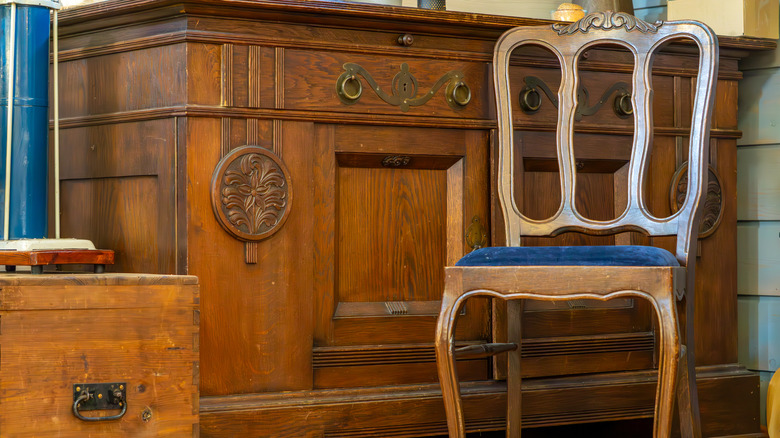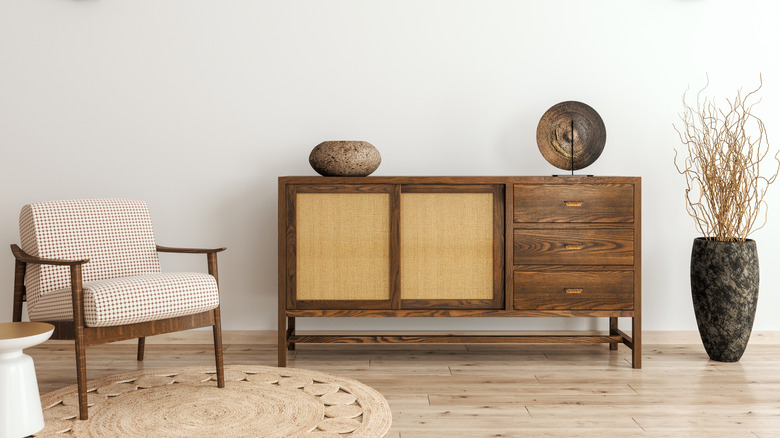The Vintage-Inspired Look That's Trending With Wood Furniture
Vintage wood furniture may never go out of style thanks to its timeless ability to add charm and character to a space, but the way people refurbish their thrifted wooden finds is ever-changing. While it was once popular to strip wood pieces and paint them in trendy shades — warm whites, glossy blacks, and slate grays have been favorites in recent years, as have pops of yellow, blue, and green — today, it's less about covering up the natural wood and more about letting it shine. With midcentury modern and other retro design trends making comebacks in 2025, people are leaning into warm wood tones and natural elements, eliminating the need for paint altogether.
So, whether you've just thrifted a new coffee table for your living room or a chest of drawers for your bedroom, think twice before reaching for a can of paint. If the wood is in good condition, consider leaving it as is to highlight its original character. But if the surface of the furniture needs a little love, you can strip it and finish it with a wood stain. And with so many shades to choose from, deciding on a stain can be just as fun as picking out a paint color. If you want to keep the piece looking retro, opt for something like a red mahogany. A light oak stain, meanwhile, would give it a more modern look. Or, you can even go bold with a deep, moody finish like a dark walnut — a trend that will start popping up everywhere in 2026.
How to stain your wood furniture to bring out its natural beauty
Once you've settled on a stain, the next step is getting your wood furniture ready for application — a process that's actually simpler than you might think. First, apply a thin coat of wood stripper with a paintbrush and let it sit for up to 30 minutes, until it starts to bubble. Next, use a plastic putty knife or steel wool to remove the original finish, making sure to scrape in the direction of the grain. Before moving on to sanding, you'll want to wipe the surface with a polish remover such as acetone to make sure there's no leftover stripper that could damage your future stain. Once that's had time to dry, sand the surface with sandpaper — one of the most important steps before using wood stain — and then apply your stain with a paintbrush or cloth, once again working in the direction of the grain.
After the stain has dried, the final step is to seal the wood with a protective topcoat. There are a few different options depending on the look you're after. A high-gloss finish, for example, offers a sleek, polished effect, while a matte finish creates a more rustic, farmhouse feel. If you want something in between, a satin topcoat provides a subtle sheen that works beautifully in houses blending modern and traditional styles. No matter which topcoat you choose, though, the result will be a timeless piece of vintage furniture that brings warmth, texture, and personality to your home.

